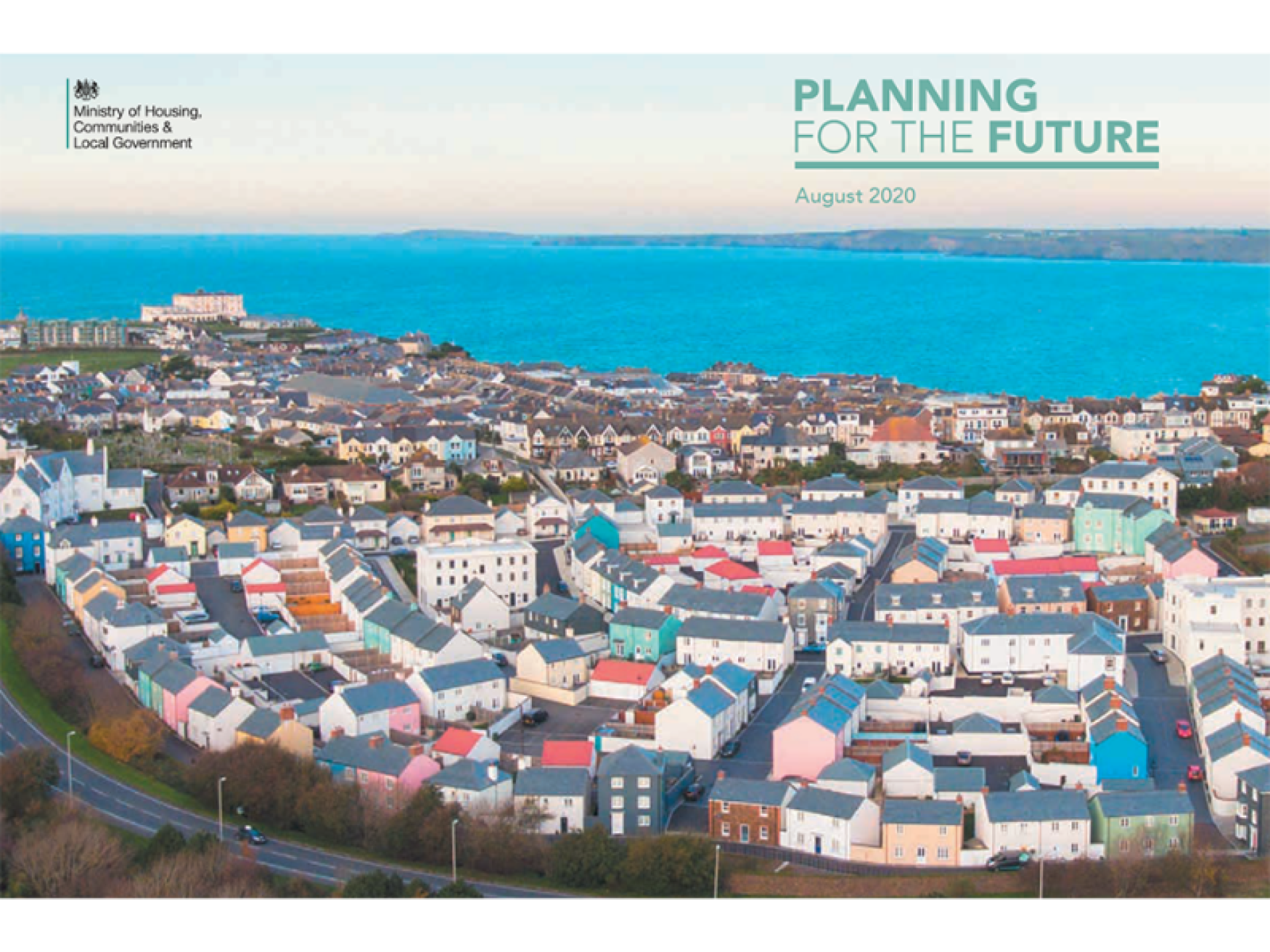3 minute read
In this blog, we discuss the potential the planning reform package has on Sigma Strategic Land (SSL) as a business and its wider implications for other SME developers. As we all agree, its effects are already being felt.
The boldness of vision in the Planning For The Future White Paper whose public consultation launched on 6th August 2020 cannot be disputed. The Government said it would be a “once in a generation” reform of England’s planning system. It remains to be seen whether this is over-stated, but already there have been some significant changes to the way that planning is being approached. The emphasis on good design has emerged as a front-runner, despite the difficulties of the subjectivity associated with the topic. The subject of design at its extremes – exceptionally good and exceptionally bad - generally occupies comfortable common ground amongst professionals and non-professionals alike. The middle ground is more disputed territory.
The White Paper has been high profile, leading to much discussion within the development industry and also playing out into wider media channels. The person in the street will now have an awareness that the planning system is changing, even if the specifics are unknown. SSL is already coming across this, as no doubt, other SME developers are experiencing. But these examples, when they arise, are really one of hope about the changes, rather than negativity, prevention or stymying any development chances. After all, changing the status quo can bring fresh opportunity.
Change is a’coming
The Briefing Paper (no. 8981 dated 12 January 2021) ‘Planning for the Future: planning policy changes in England in 2020 and future reforms’ confirmed what we all knew: that the proposed reforms would prove in a word ‘controversial’. No more so than calculating housing need which turned from a mathematical perfunctory tool into a political hot potato with the oft-quoted ‘mutant algorithm’.
Ahead of the White Paper launch, Boris Johnson said about the economy on 30th June 2020 that in the recovery from the pandemic, we would “build better and build greener, but we will also build faster”. This is an interesting phrase and one that requires some further thought. We all want a faster more responsive planning system and delivery rates, yet it is more multi-faceted than ever before. At its heart, the planning system is about good design, place-making and building communities. In its practicalities and execution, it is nuanced, tensioned, political and has to find a way to balance the commercial realities of a scheme with the expectations of a Local Planning Authority. No wonder there is a shortage of housing.
When the White Paper seeks to be all-encompassing, yet its implementation is necessarily more bite-size due to logistical difficulties of delivering it en masse, it is hard to see the big picture and how the smaller parts can make up the whole. We need to cross-reference continuously or risk losing the boldness of its vision. After all, there is no timetable or planned release for any of the changes making up the reform package. We are unsure if we have reached half or less than half (or any other arbitrary percentage) of what will be implemented.
This creates uncertainty, especially when it comes to working out a Planning Strategy for any given site. Fortunately, strategic land can generally ride out over longer timescales in order to buffer such vagaries and uncertainty.
Another change foreshadowed in the White Paper is the removal of the Duty to Co-operate. It is widely expected that there must surely be some cross-boundary planning to fill the void. Strategic planning can deliver both the housing numbers and large pieces of infrastructure needed across regions and different areas effectively. To purely focus within an administrative boundary, arbitrarily drawn, would engender isolationist viewpoints and a widening of delivery rates in some Authorities rather than others, depending upon their constraints.
Reshaping the planning legislation landscape is costing significant money and time to implement the various concepts satisfactorily. Some of this will fall to the Local Authorities to undertake such as the digitisation of map-based Local Plans, or creating their own design codes. Are LPAs properly funded to undertake this? Still other ideas raise questions about where best to target an implementation: should zonal planning be top-down driven, or be more localised and bottom-up informed?
Whilst some areas of the White Paper have been taken up such as the expansion of Permitted Development rights and the prominence in defining First Homes (sometimes what feels like overnight), others have fallen away such as the mutant algorithm for calculating housing need and raising the affordable housing threshold. Other ideas are in a holding pen such as the Infrastructure Levy which seeks to capture development uplift and at first blush appears to be difficult to accurately calibrate and effectively introduce.
Some ideas in, some out, still more awaited. This is, after all, the basis of any White Paper, but it is one that needs to be squared with the overarching boldness that has been widely heralded.
A core facet is the Government’s stated ambition to deliver 300,000 homes per annum by mid 2020s (not that far away). Like some great complex mathematical problem, it is proving hard to solve. The housing target must respond to the vagaries of housing need and delivery at the local level. Put another way, the top-down figure requires informed bottom-up responses to be successful. Again, strategic planning could have a role to play here too.

SME developers and ideas
In a recent blog, we highlighted the Government’s invitation through the vehicle of its White Paper public consultation for SME developers to provide ideas about how the planning system can be best adapted to suit them.
The Planning for the Future document states that SME housebuilders push through the majority of smaller sites and at pace. It has been proposed in the White Paper to defer Community Infrastructure Levy (CIL) payments, a decision which is still awaited and would no doubt help.
The consultation document also maintains that a balance must be struck by securing the relevant s106 planning obligations in order to deliver affordable housing including First Homes which CIL alone cannot deliver. It appears that s106 still has a valuable role to play. Even in a post-reform world, some aspects cannot be bettered it seems.
Regardless of the size business, we all must want the same thing: a faster, responsive and well-funded planning system to suit the needs for effective housing delivery. There is nothing controversial about this. It is how we are going to reach this point that creates such debate.

With Change Brings (Great) Opportunity
The Environment Bill is also expected to be brought forward into legislation this year and its synergies with the ‘reformed’ planning system will be interesting to understand.
What we do know is that SME housebuilders and strategic land promoters like Sigma Strategic Land (SSL) need to be alert to the changes and respond quickly and appropriately. Fortunately, there is a very experienced and knowledgeable land and planning team at SSL who are well placed to keep an eye on the emerging changes.
As the motivational speaker, Nido Qubein said in perhaps the most contracted version of the sentiment: “With change brings opportunity”. Sigma Strategic Land will certainly be keen to understand what the planning reform package means for development opportunities going forward. We might even put a ‘great’ in there.
Thank you for reading our blog and in the next post, we examine the longstanding issue of the Green Belt.
Back to News
